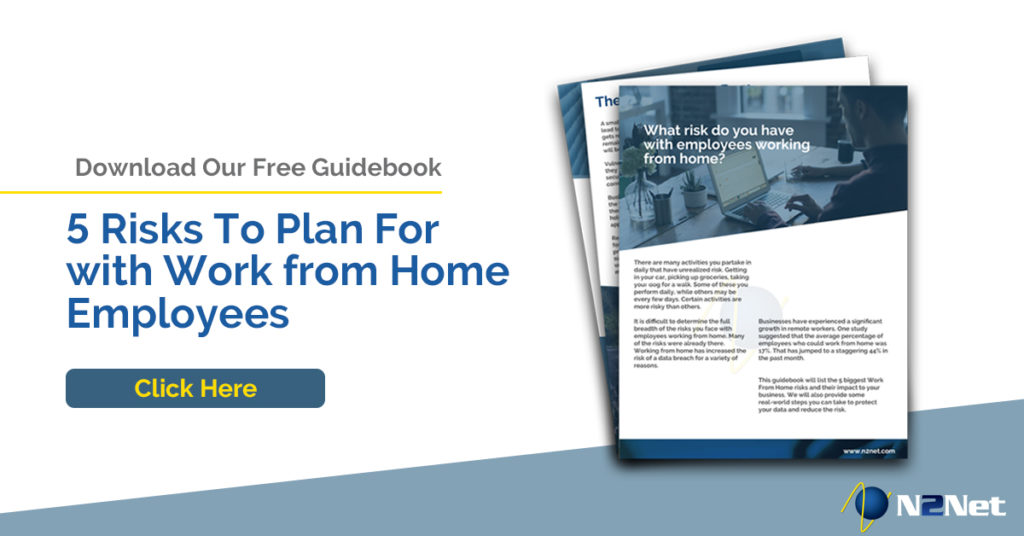The Reality of Disruption

Ransomware attacks are more serious than the headlines would have you believe.
For some, you’ve only read about ransomware attacks on the news. The headlines are alarming and raise the proper amount of concern. City of Baltimore, Target, Home Depot, Equifax, the list of organizations who have experienced a cyber-attack is long.
Many organizations fail to take their security seriously. It is only after an attack, after files were lost, and customers moved on, do they implement the proper security policies. It is amazing how many CFO’s find money to pay ransoms and IT professionals to clean up the mess but wouldn’t allocate a fraction of that cost to implement proactive solutions such as End Point Detection and Response and Security Awareness Training.
With the proper backups and security software in place, a disruption may last an hour to less than 15 minutes.
Reduce your risk of Phishing by up to 84%
Organizations that made Security Awareness Training part of their overall security posture saw up to an 84% reduction in susceptibility to phishing attacks. While achieving 100% is unlikely, how well would your employees do? Would they open a malicious attachment or click on an infected link?
If Security Awareness Training can reduce the risk of a cyber attack by up to 84%, imagine what adding End Point Detection and Response can do for your security. Again, if you use the internet you won’t be able to prevent 100% of cyber-attacks.
Email is the primary tool hackers use. You will make their day if you open the infected PDF. Their job is easy when they can trick unsuspecting employees into following a link to reset their password. Keep in mind, that hackers use deception in their trade.
How can you know if the email you received to reset your password is legitimate? Is there any way to know if the invoice you received from a vendor you use monthly needs to be paid?
Security Awareness Training will answer these questions and more. Before you know it, your employees will be able to identify spoofed emails, fake password reset emails in addition to false pleas for money.
Prevention Is the Key
Stopping a disruption from occurring is the primary motivator for purchasing an End Point Detection and Response solution. EDR can provide real-time monitoring and detection of threats. The rapid response of the Security Operations Center should an attack occur gives your team the support it needs.
EDR may be able to stop the threats brought in by the 6% who may click on a malicious link. The 6% who would pick up a thumb drive in the parking lot and plug it into their PC. EDR may block the malicious file from being downloaded and wiring money from your account.
An often-overlooked benefit of EDR is the insight and analytics the solution provides. When your team can see what area is most vulnerable, a clear picture begins to emerge, and budgets can be allocated accordingly.
Cyber Security Insurance isn’t Cyber Security
Cyber Security Insurance isn’t the same thing as having proper cybersecurity. Insurance is designed to assist with damages and losses from a cyber-attack. Cybersecurity is designed to prevent a cyber attack from happening in the first place.
EDR’s forensic capabilities may be crucial when processing your Cyber Insurance claim and ensuring that damages are paid. Many companies find out too late they won’t be receiving funds since they failed to provide the data necessary to have the claim fulfilled.
Don’t fall into a false sense of security and believe that having simply Cyber Insurance will get you out of the situation if a cyber attack were to occur. Cyber Insurance doesn’t make you a security professional any more than having running shoes gives you the ability to run a marathon.
Cyber Insurance is designed to help you recover from a Cyber Attack. Work with your insurance agency to make sure you have the correct policy. Also, make sure your team knows what information is required to process a claim and what the policy covers. Some policies exclude certain types of attacks. Knowing any exclusions in your policy is a critical component to knowing if your policy is providing the correct level of protection.
Floods Aren’t Covered
Many homeowners who live in areas where flooding is rare are shocked to learn that their homeowner’s insurance doesn’t include protection from floods. Insurance companies know that the cost of recovering from a flood can be costly. Homeowners often overlook adding flood insurance unless they live in an area prone to flooding.
Homeowners only find out after a flood that their policy lacked this key component. In a similar manner, many businesses find out the shortcomings in their Cyber Insurance Policy after they suffer a cyber-attack.
Don’t wait until the aftermath to find out what your policy covers and doesn’t cover. Make a list of potential losses and work with your insurance company to see what additional coverage can be added if any. Be sure to factor in revenue losses, fines, and ransoms. Your insurance agent should be able to help you ensure the proper areas are covered.

